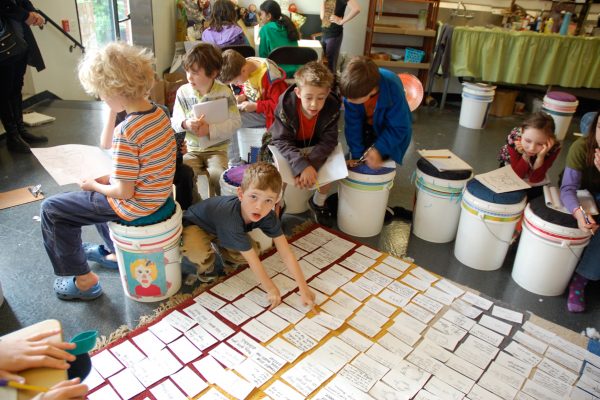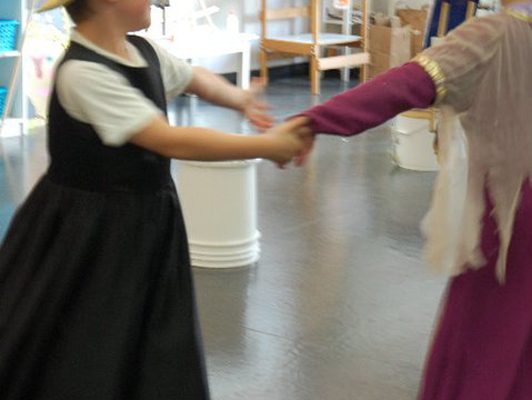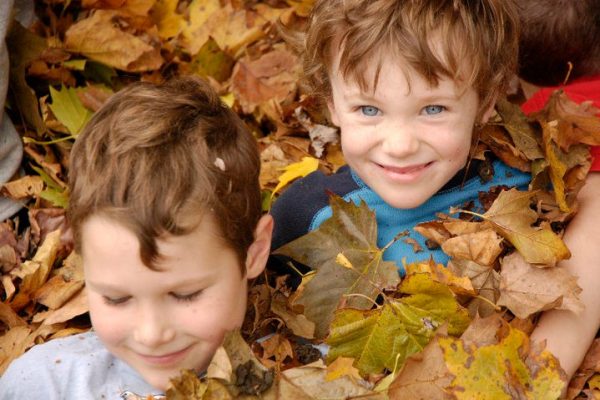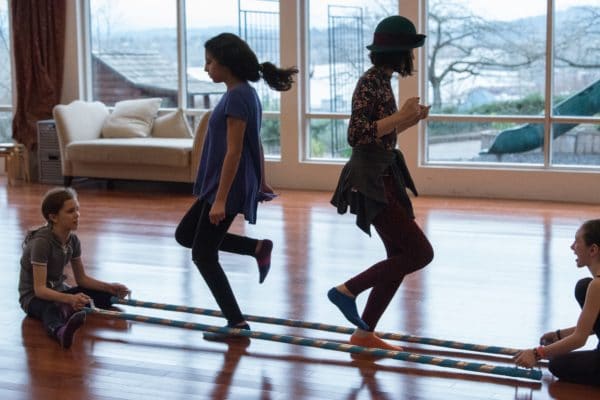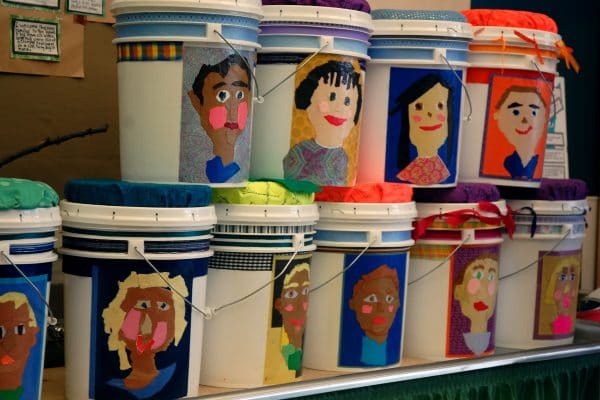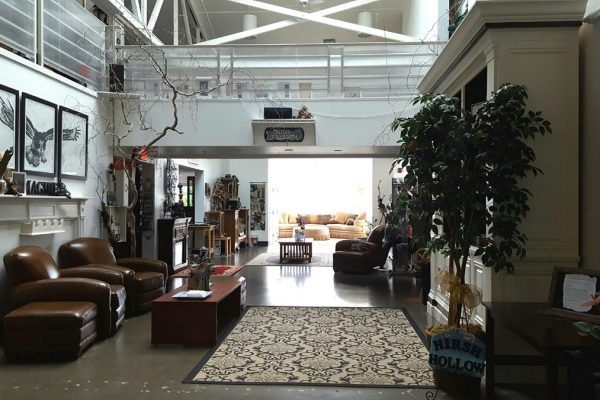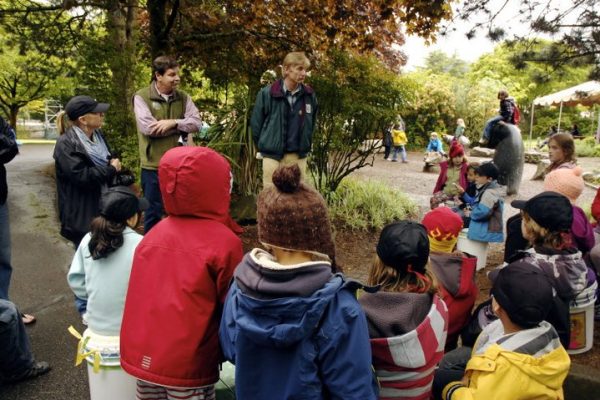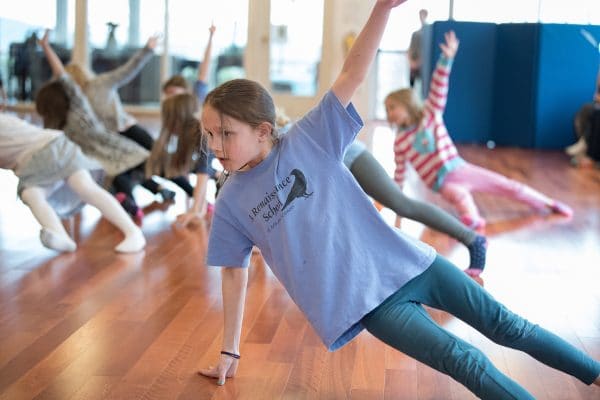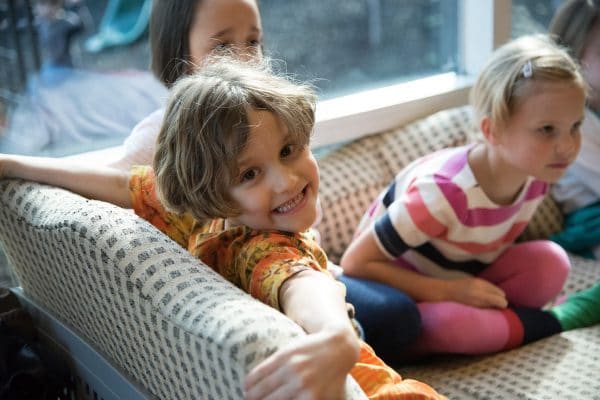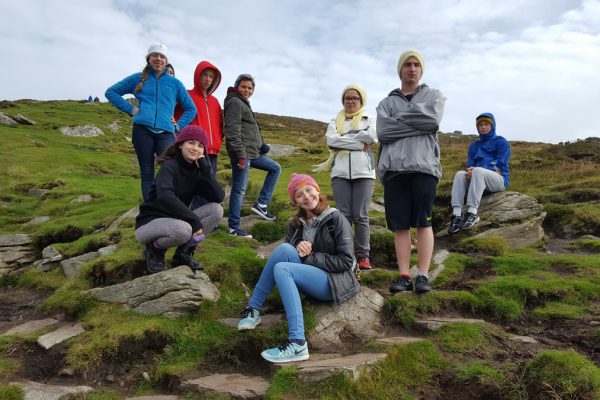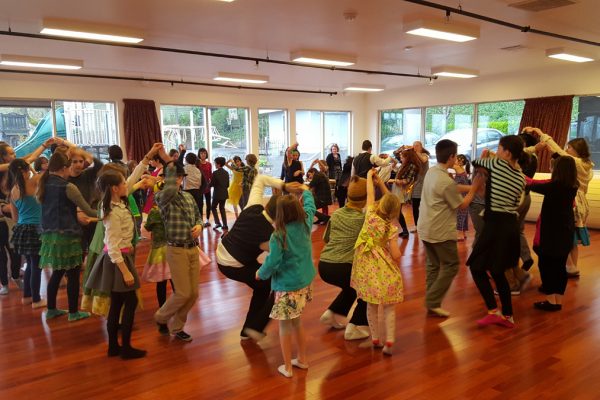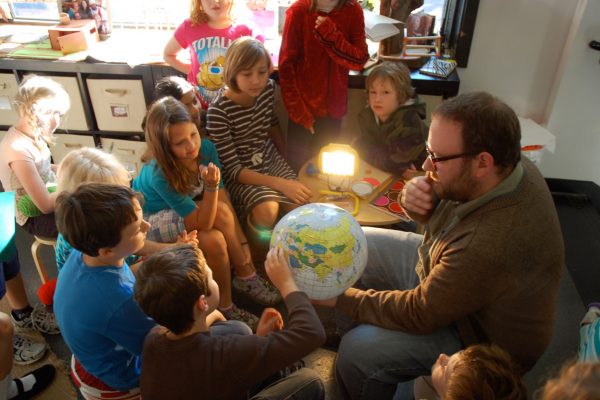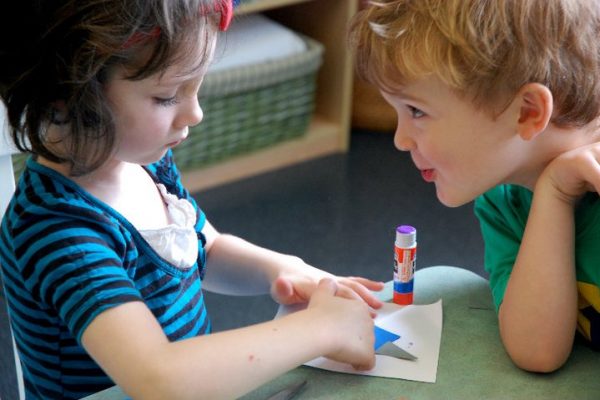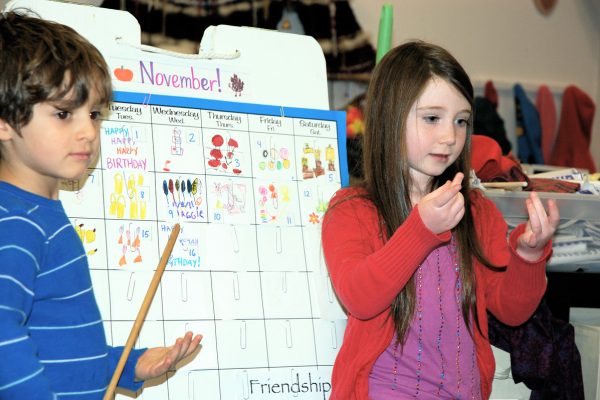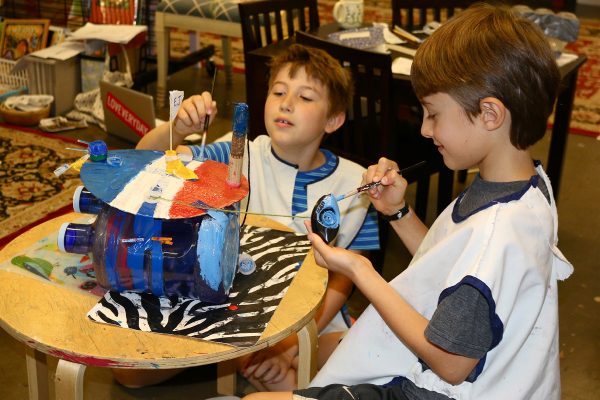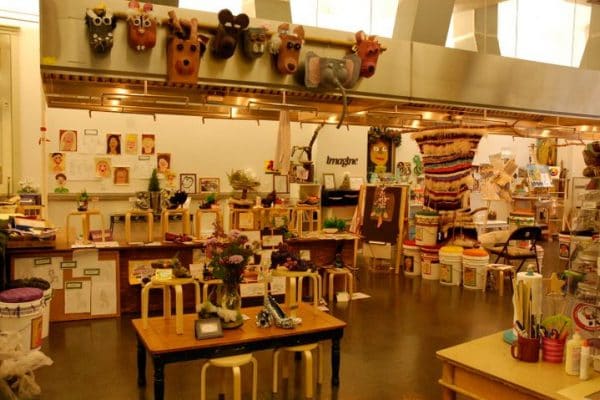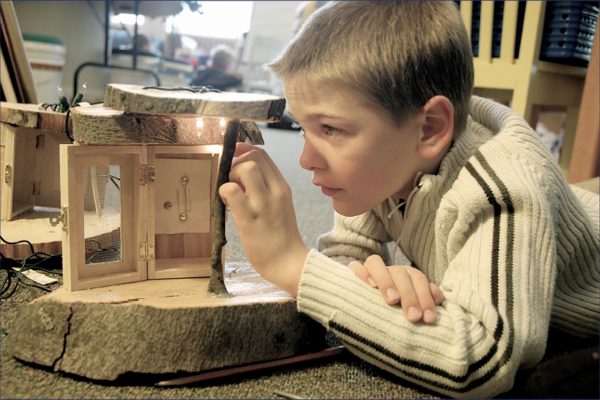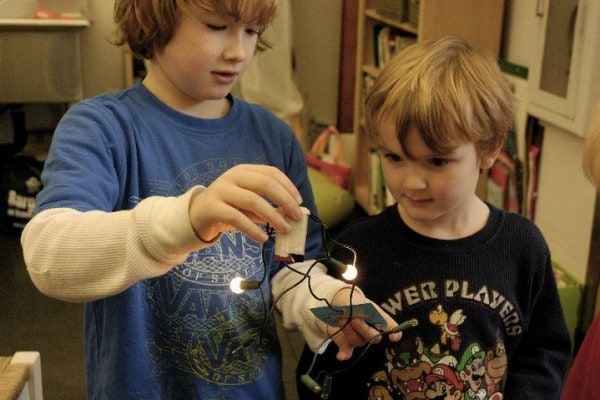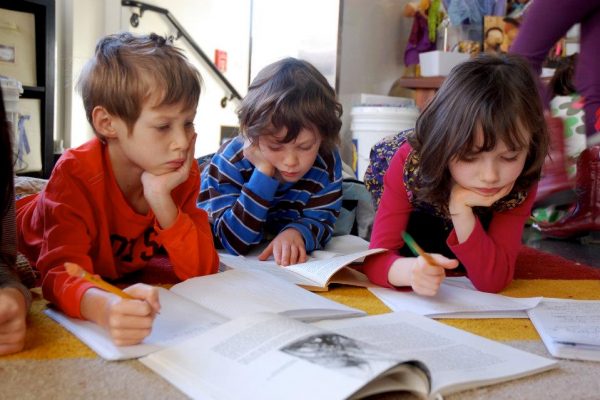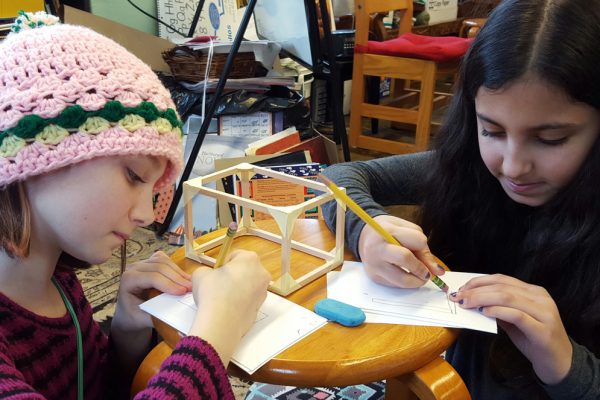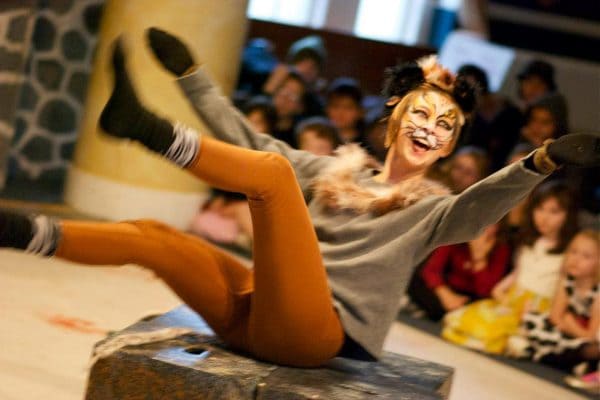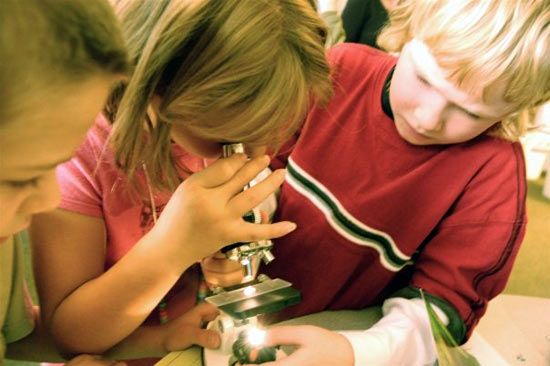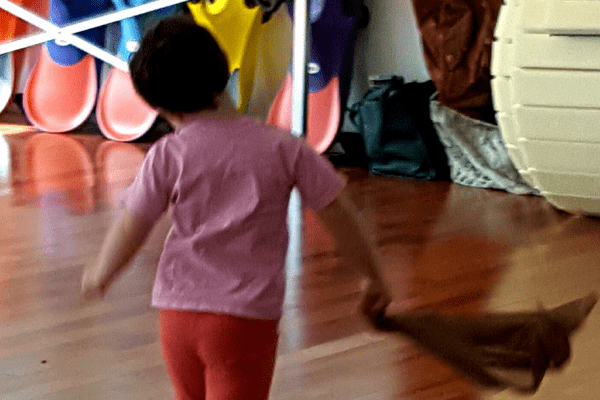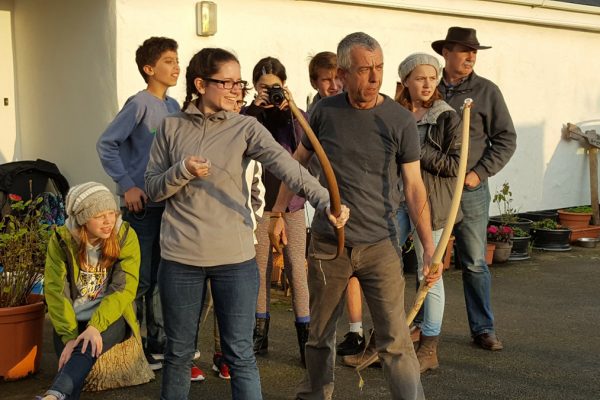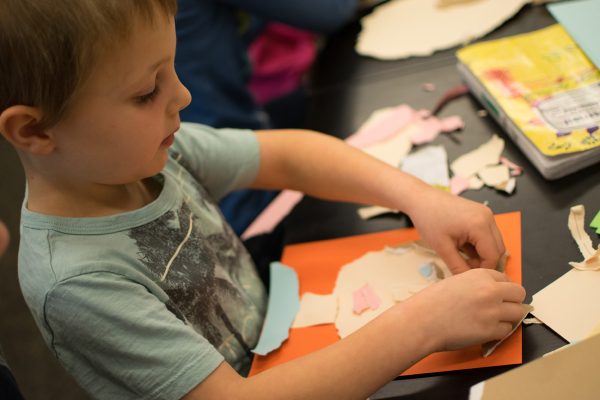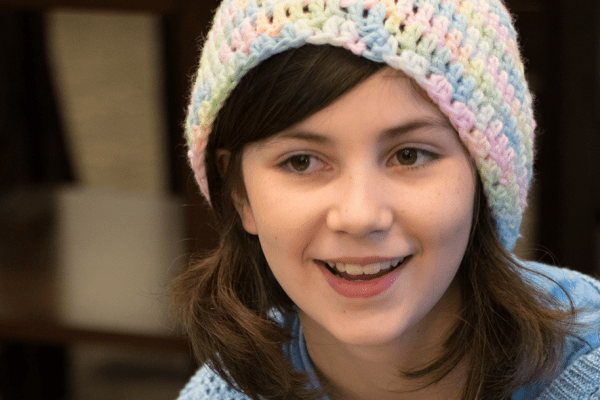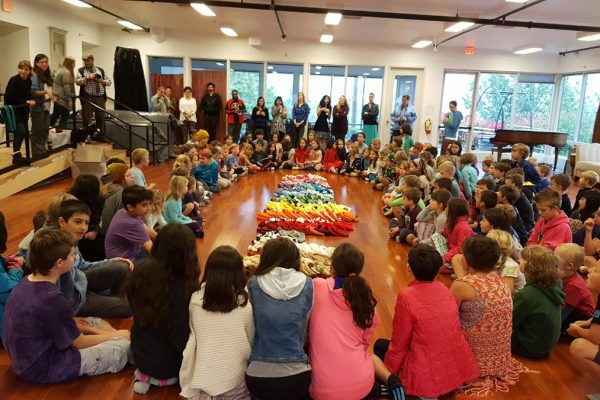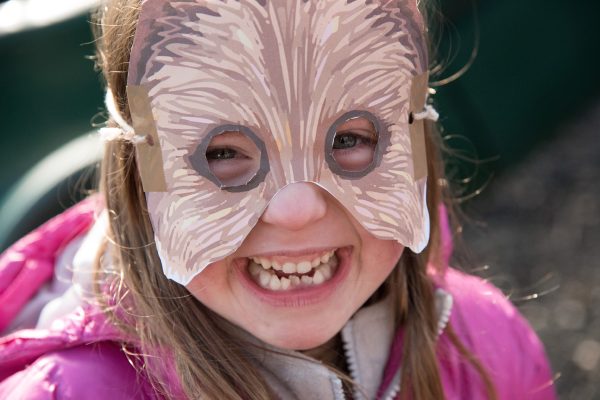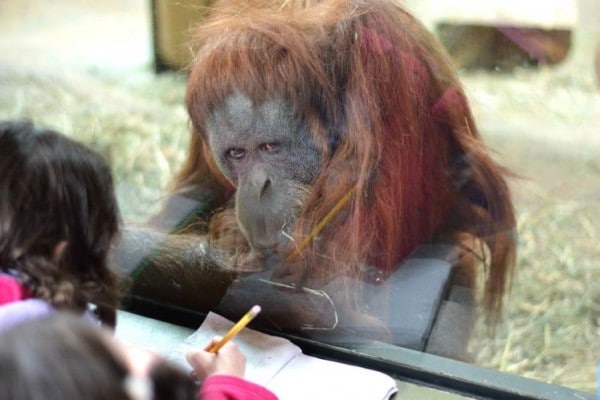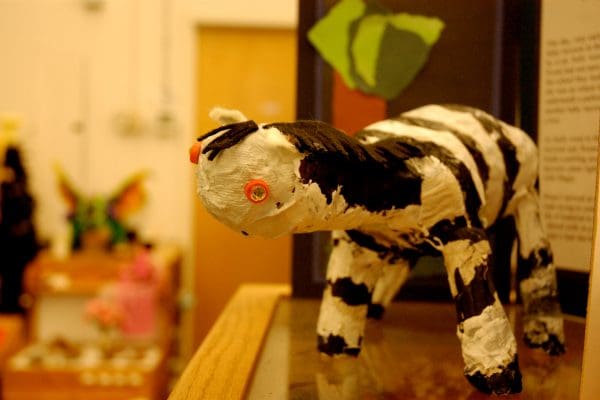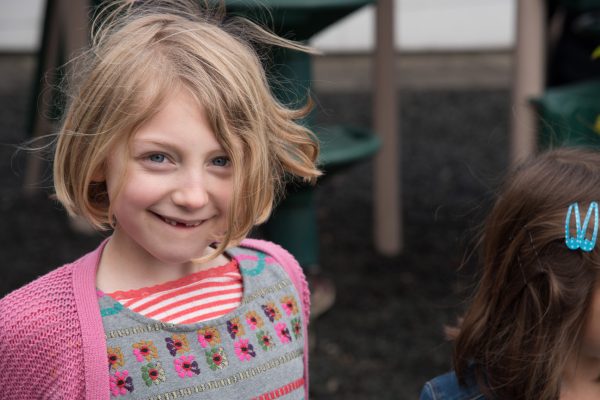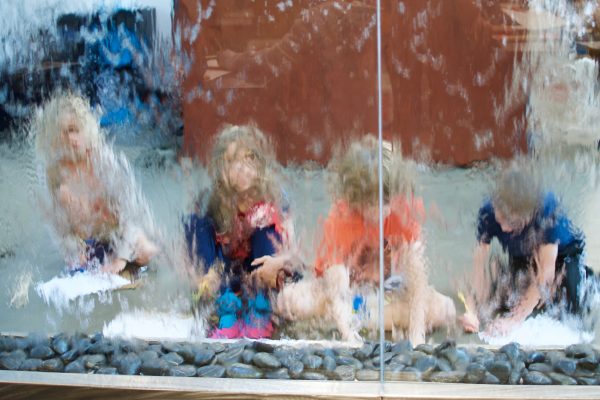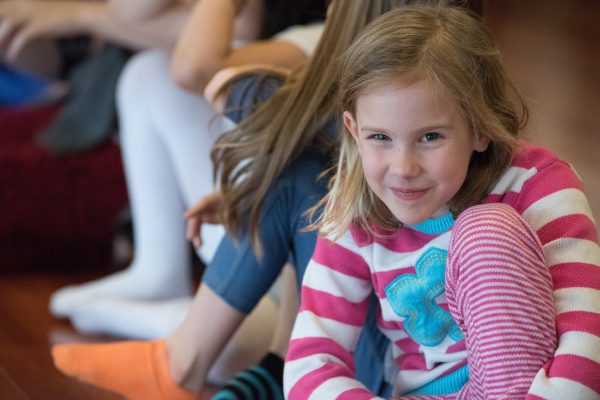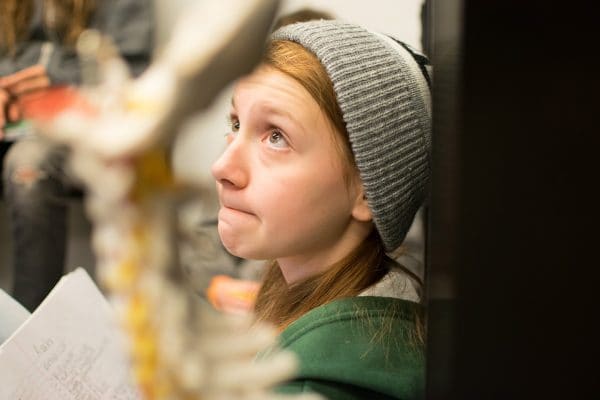A visual organization.
Human Migration (ages 11-13)
From several non-traditional sources of information, we drew inspiration to create essays of comparison. The theme focused on human migration caused by powerful authority. The three groups we used as exemplars were the Irish during the Great Hunger, the Russian Jews at the turn of the 20th century, and the Native American resettlements on reservations. Our information was gathered from museums, native stories, readings, theater, film documentary, lectures, interviews, and site visitations. We used three intersecting circles as our visual organizer to prepare for a complex piece of writing. The intersecting center provided us with details that generated an opening paragraph, the intersection of two circles provided transitions of comparison, and the areas with no intersection provided areas of contrast.
The process concluded with individual essays that arose from collective information and individual analysis of the circles… each plentiful in substance, fluency, and voice. The following are just the introductory paragraphs, drawn from a deep understanding of the issues.
“Life-changing journeys have formed our human history. Our ancestors’ lives shaped our future and their imaginations changed our world. Some, a minority, had their own traditions and beliefs that identified them from others which opened them to isolation and poor treatment. These included the Russian Jews, Irish, and Native Americans. Many families were forced from their homes by the authorities, losing loved ones along the way.” Abby
“In our world’s history, life-changing events were experienced by our ancestors as our families grew. Many cultures have been overshadowed with oppression by others hungry for power, resulting in great movements of people forced from their homelands, following resources or looking for hope.
Groups like the Native Americans, Russian Jews, and the Irish all had unique ways of life that identified them, including religious beliefs, celebrations, language, dance, music, or work. These things unfairly set them apart from the rest as they struggled with authorities, sickness, and loss. These traditions changed and evolved as they continued on their journeys. The following migrations happened during the nineteenth and twentieth centuries with some level of discrimination following them today.” Cooper
“The Jews, the Irish, and the Natives… all fighting a more powerful governmental authority. Excluded for being who they are, for following their own traditions, and for having their own sacred holy days, they were forced from their homes, not wanted in their homelands. These people led lives of pain and anger, losing family and friends. And these groups are not the only ones. How did these people and their experiences shape our human history?” Dylan
“Hurt…
Teased…
Tricked…
Rejected…
Evicted…
Jewish, Irish, and Native Americans…
To name a few.
Those cultures had unique traditions, but they shared similar stories of migration and resettlement. The results affected individuals and our human history. The authorities took actions against these identifiable groups to increase their own wealth through ownership and control of land. They used their power to isolate and humiliate people they considered lower class.” Tom
“Human migration has constantly influenced the course of our history, shaped our traditions, and inspired our stories. These are the stories of oppressed cultures whose beliefs and traditions set them apart, gave them strength and recognition in the hardest of times, and were held close when forced from their homes, loved ones, and land. In most cases, the oppressors were interested in themselves, their own welfare, and their own power. Here are three stories.” Clara
“Different cultures have fought for power and land. The human migration that results from this struggle has shaped the world in which we live and everything about us. Throughout our world’s history, many cultures have been overpowered and taken down by the people at the top of the hierarchy. These are just a few of them.” Fionn
“Human migration has been seen all around the globe in the past and is still happening today. All different kinds of people and cultures have experienced it. Some of the people who it happened to were the Irish, Native Americans, and the Jews. Each of them struggled with other people who had more power and wanted their land.” Max
“Throughout history, human migration has affected the general population. People were forced to leave their homes and ways of life, sometimes for place of hope. Beliefs, language, and traditions were the main reasons for exclusion, leading to these unfair resettlements. Large groups of people whose differences set them apart felt threatening to the ruling authorities. Their differences left them open to isolation and unfair treatment. Several examples are the Irish, Native American, and Russian Jewish populations in the nineteenth and twentieth centuries. Their stories share characteristics.” Bella
“Throughout history, many cultures have been suppressed, some to the point of forced migration. Among these cultures are the Jewish, Irish, and Native Americans. Each has had its own traditions, religion, and lifestyle that set them apart from their oppressors and made them easily identified targets.” Malakai
